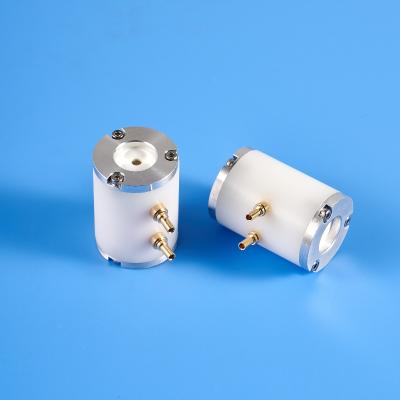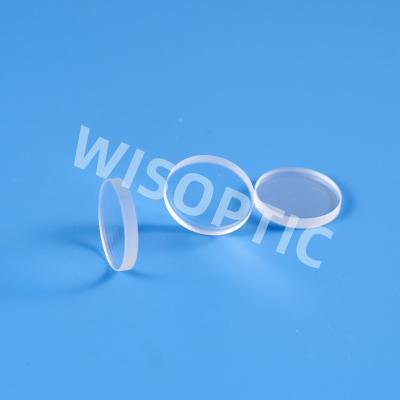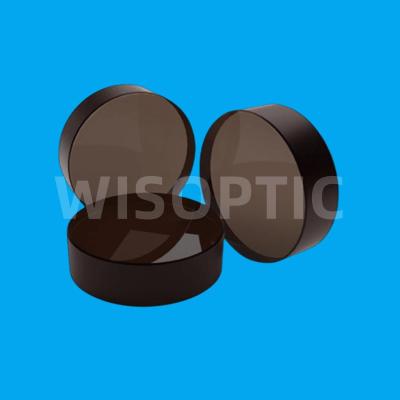Study on the efficiency and temperature robustness of chirped PPLN crystal in 1064nm frequency doubling experiment - 04
3. Experimental Equipment
The overall device diagram of the frequency doubling experiment is shown in Figure 3(a). The 1064nm continuous light passes through a half-wave plate and is directly focused into the CPPLN crystal by a lens. The generated frequency doubling light passes through a 532nm transparent filter and is received and detected by a power meter. The self-built LD-pumped Nd:YVO4 continuous laser used in the experiment can reach a maximum output power of 22.53W. The output light is measured and analyzed by using the FX2000 spectrometer of Fuxiang Optics and the S-WCD-LCM spot analyzer of Dataray. The spot shape and spectrum of the output light are shown in Figures 3(b) and (c). After beam expansion and collimation, the output spot diameter is about 5.2mm. The lens used for focusing is an ordinary quartz lens with a focal length of f = 300mm. After focusing, the spot waist diameter is close to 300m. The fixture used in the experiment for CPPLN is a copper fixture to obtain better heat dissipation. In order to achieve temperature control, drill a hole on the fixture and put a thermistor to monitor the temperature. At the same time, the fixture is fitted with a semiconductor refrigeration (TEC). The TEC used is HT-04902 produced by a cold technology.

Fig 3. Correlation diagrams of CPPLN SHG experiment. (a) Device schematic diagram; (b) The shape of the
fundamental wave; (c) The spectrum of fundamental wave and second-harmonic wave
The CPPLN used in this paper is cut in the z direction, with a light aperture of 1mm*6mm and a light length of 15mm. Both light-transmitting surfaces are coated with 532nm and 1064nm anti-reflection films, with a light transmittance of T = 99.8% for 1064nm and T = 99.5% for 532nm. In order to improve the damage threshold of the CPPLN crystal, we doped 5 mass% MgO into the CPPLN crystal. After the CPPLN experiment, we replaced the frequency doubling crystal with the commonly used type I temperature phase-matched LBO crystal and conducted a set of comparative experiments. The aperture of the LBO used is 3mm*3mm, the light length is also 15mm, the phase matching angle is θ = 90°,φ = 11.2° @1064nm, and both light-transmitting surfaces are coated with 532nm and 1064nm anti-reflection coatings, with a transmittance of T = 99.9% at 1064nm and T = 99.7% at 532nm. The material of the fixture for assembling the LBO is also copper, and the temperature of the LBO is controlled by TEC and thermistor from the same batch as the CPPLN fixture. The spectrum measurement results of the 532nm light obtained by frequency doubling of CPPLN and LBO are shown in Figure 3(c).



